Basic Elements of Design You Should Know About
Design is used to represent messages or ideas through shapes, color, texture, typography, and other aspects. A good design combines different shapes, color and texture in a way that they please the human eye. Design is one of the most fascinating arts to ever exist
Following the footsteps of Salvador Dali, You must eradicate fear while creating a design because there is no perfect design. To fear imperfection is to put a lid on your own creativity.
What Is A Good Design?
Steve Ballmer, former CEO of Microsoft, said “Accessible design is good design“. One should create a design that is easy to use for the masses, and in case of a graphic design, understandable for the targeted viewers.
Linda Leader, the graphic designer and creator of the FedEx logo said that “I strive for two things in design: simplicity and clarity. Great Design is born of those two things” no doubt, simplicity and clarity are the major contributors to a design’s success. The McDonald’s famous arch logo is an example of simplicity in design.
Margaret Oscar – a famous designer – on the other hand said “Designs are meant to be loved, not to be understood”. Keeping that in mind can help us cope with our obsession with logic in every portrait. Some designs are just there to be admired, and that’s the purpose they are meant to serve.
According to Tim Brown, CEO, and president of IDEO, “Where you innovate, how you innovate and what you innovate are design problems” This quote can serve as a kick-starter for your next meaningful and well thought-out design.
Every design has the ability to convey a message, for example; the floppy disk in the computer icon indicates that by pressing this icon you can save your file.
Baskin Robbins is a popular ice cream parlor that provides thirty-one different flavors. In their logo, they are conveying a message that “we provide 31 flavors in our establishment”.

Logo of Baskin Robbins
In this logo, look into B and R and as you can see 31 is highlighted in different colors which indicates that they provide 31 different flavors. This unique trait about their logo makes it one of the most famous brands in the world. There are endless examples from the Amazon logo to FedEx which all convey messages by clever use of their elements of design.
We’ll walk you through 10 basic elements of design that enable you to create your own meaningful designs.
- Line
- Color
- Texture
- Shape
- Framing
- Typography
- Space
- Scale
- Dominance & Emphasis
- Balance
- Harmony
Line
The line is an element of art that defines a point moving in space. Lines can be vertical, horizontal, curved, diagonal or the combination of all.
Lines can be rough or smooth, and they can have a different thickness within the design. By combining different lines, your logo can represent anything. It helps viewers understand the meaning of your design.
IBM is a famous technology company operating worldwide and headquartered in Armonk, New York. They have used different lines to represent their initials in their logo.

Logo of IBM
As illustrated in the logo above, IBM has used lines to differentiate themselves from other companies. Lines can be used to send subliminal messages.
The straight line for example is an analogy of order and clean structure. The stripes are its unique concept that makes the symbol of the company stand out in its niche. Such a logo gives IBM their brand identity.
You may find it interesting: How Design Empowers Brand Storytelling?
Color
Color is the most important element of design. Inappropriate color scheme often leads to disaster. Even if the design is purely set in grayscale it must be balanced and contrasted correctly. There are two common color models.
- RGB color model
- CMYK color model
RGB Color Model
The RGB color model uses Red, Green, and Blue. RGB is an additive color model. The term “additive” refers to a property that predicts the appearance of colors by mixing the base colors – in this case, Red, Green, and Blue.

RGB Color Model
These colors are mixed in numerous ways to produce a wide array of new colors. RGB color model is used for displaying images in an electronic system such as TV and computers.
CMYK Color Model
CMYK is a subtractive color model. It is often used in printing. CMYK refers to the ink plates used in printing – Cyan, Magenta, Yellow, and Key. Therefore, the initials of these form the name of this color model.
It was first popularized at the turn of the 20th century. After extensive experimentation in the 1800’s, it was found that cyan, magenta, and yellow inks provided the largest possible set of unique colors in printed media.
This picture is based on CMYK color model. It is the perfect example of color mixing to achieve the right look. These colors can be used to convey a message as well.

Example of Color Design Element
Interesting guide: A complete guide to visualisation of Shades
Texture
As we navigate the world, we can see the texture around us. Texture is one of the most important elements of design that defines the surfaces of forms and shapes. There are four types of common textures in painting:
- Actual Texture
- Simulated Texture
- Abstract Texture
- Inverted Texture
Actual Texture
Actual Texture is a combination of how the painting looks and the sensation of touch it stimulates in your mind.

Actual Texture
In the example above, a picture of rocks and their texture determines their looks and feel. There are endless examples of actual texture from cornfields to magnificent landscapes.
Simulated Texture
The simulated texture is a type that is created to look like something but it is not.

Simulated Texture
The picture above is a simulation of a forest, and its texture but it’s not real.
Abstract Texture
Abstract texture indirectly represents the object but the concept of that object is converted into patterns.

Abstract texture
In the picture above, there are some seamless curved lines which represent abstract textures.
Inverted Texture
The inverted texture is a way to add alternative material to create an exciting texture.

Inverted Texture
In the picture above, if you look inside the fish, there is a creative texture which depicts different meanings, such as good and evil inside the fish internals and there are countless other meanings that we can extract from these pictures.
Shape
A shape is a 2D area which is enclosed in actual lines. These lines represent something by connecting or relating to each other. This in turn forms a perceivable shape.
These shapes can be triangles, rectangles, parallelograms, squares, ellipses, blobs, circles, or hexagons, and absolutely anything. Using the right shape in the design is crucial because your design’s message depends on it.

Nike Logo
Nike is one of the famous sportswear brands in the world, and its logo comprises of one shape that has only two edges. This shape has become one of the most recognized logos in the world.
This swoosh conveys two messages. The swoosh resembling a check mark makes us think of “right”, which comes off as an encouragement to do something. Their slogan – Just Do It – further emphasizes upon it.
Second meaning is a bit subtle as compared to the former. Swoosh is a shape that comes from the wing of a character believed to be the goddess of victory in Greek mythology.
This message when understood ignites the spirit of sportsmanship in their target audience who are already either sports enthusiasts, or aspiring athletes.
Important for you: 12 Principles of Design Followed by Nike
Framing
Frames are used to organize information and create the sweet spot to highlight information for the viewer’s eye. They are useful for defining shapes in the blank white space of a website or a page. Frames are considered to be subtle and they are everywhere if we take a closer look.

Example of Frame
In the picture above, an example of a frame as the design element can be seen. We can see that the circle is acting as a frame, and in that frame, the message is being highlighted.
Typography
Typography plays a major role in setting up the mood for the design. Typography is not only words but also how it is written. Typography can add balance to your logo. It can also make your logo more memorable if you use nothing but typography to create a logotype.
There are seven typographical design elements to keep in mind:
- Typeface
- Hierarchy
- Contrast
- Consistency
- Alignment
- White space
- Color
In the picture below, you can see the text and font are giving us a subtle message, something along the lines of “keep swimming in the waters.”

Example of typography
Space
Design space is referred to as the area within, below, or above on single or multiple objects. It is essential to understand 2D and 3D works of art.
Space can be used to create an illusion in a design. For example, how far are two objects placed, or the perspective through which the image is viewed.
Adding light and shadow to the surface of the object to simulate the way a real object reacts to lightings are some of the many examples.

In the picture above, you can see the asteroid is placed in the middle of the page, and the background is used as an illusion of space orbit to make it look like this asteroid is moving in an orbit.
Scale
Scale refers to the size of an object. It is believed that subtle differences in scale are suited for professional content. In other words, it identifies how large or small the object will be. Changing the scale of an object can create visual interest.

Scale element
In the picture above, you can see six circles having different sizes. The most suitable scale varies from case to case.
Dominance & Emphasis
Emphasis refers to dominance of certain objects over others in the design. It is often added by object scale, style, color, and contrast. This is used to focus the attention of viewer on a certain part of design and convey a message.
For example, in the discount advertisement, the word discount is often written in a larger font and darker color.

Emphasis element
In the picture above, you can see that the middlebox, which is larger got the most viewing time as compared to other boxes. This fulfills the dominance and emphasis element.
Balanced
The term balanced, refers to the distribution of the visual weights of an object. There are two types of balance:
- Symmetry
- Asymmetry
Symmetry
Symmetry refers to having objects of similar sizes and weight on both sides.
Asymmetry
Asymmetry is the exact opposite of Symmetry. It means that the sides of an object cannot be precisely the same.

Balanced element
In the picture above, you can see that symmetric designs have a more linear approach compared to asymmetric designs. Usually, the designer prefers asymmetry because it provides versatility.
You may like it: 13 Graphic Design Quotes To Inspire You
Harmony
Harmony occurs when all the elements of design add up to form the concept a design is based on. Harmony consists of alignment of every aspect of design with the message it is supposed to deliver in the final result.

Harmony Design element
In the picture above, you can see unity between design elements and how they work together to produce the final result.
In Conclusion
Up till now, we’ve talked about various elements of design that help you convey the message you want. Many famous brands and graphic designers use them to make exceptional design that quickly gain popularity in their target audience.
- Lines can illustrate designs
- Colors play a major role in the theme
- Textures are used to represent the forms of objects, surfaces, and background
- Typography contributes to the message as much as the text itself
- Frames help us create a focal point in design to add emphasis on the objects we want
- Shapes are used to represent the brand’s identity
- Sizes and scaling helps us balance and emphasize on the important aspects
- When all design elements work together in harmony, it all adds up to represent the concept you aim
The best way to get a strong command over creation, placement and use of these elements is to practice.
You can start with making something simple, and then use different elements to enhance your design. You can also opt to get inspiration from nature or successful designers.
Inspiration plays one a major role in designing. Without inspiration, a person cannot create a better design or inspire other people.
-

Waqas D.
Waqas D. is the co-founder of the branding and website agency, FullStop™. He supercharges brands by crafting memorable logos, brand identities and engaging websites. Besides thousands of startups and medium-size businesses, FullStop has worked with likes of Microsoft & L’Oréal. View our portfolio or get in touch.
Get a Free Quote
+1 845 3770255
Call on anytime
To discuss your project










